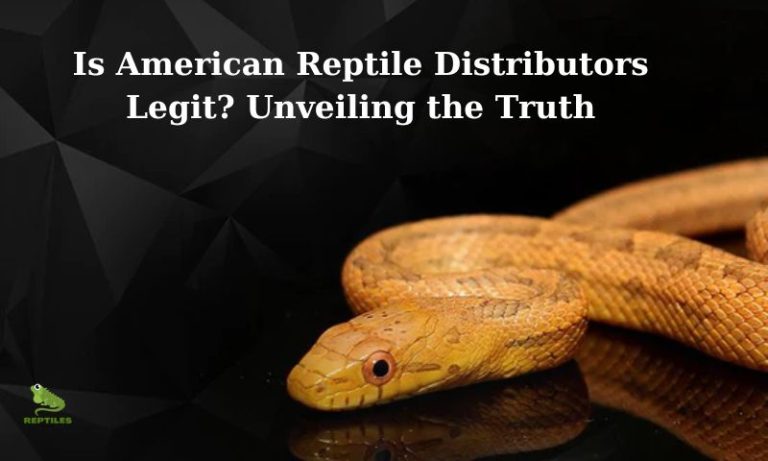What Reptiles Do in the Winter: Unraveling Their Fascinating Behavior
Discover the fascinating world of reptile winter behavior in our article “what do reptiles do in the winter?” Learn about hibernation, migration, and more!
As winter approaches, many animals start preparing for the chilly days ahead. But have you ever wondered what reptiles do during this season? Unlike mammals, reptiles are cold-blooded creatures that rely on external heat sources to regulate their body temperature. Surviving the winter can be quite a challenge for them.
In this article, we will unravel the captivating world of reptile winter behavior. From hibernation and brumation to migration and adaptations, we’ll take a closer look at how reptiles brave the cold months. Understanding reptile winter behavior is crucial not only for their survival but also for the health of ecosystems. So, let’s dive in and learn more!
Hibernation and Brumation
![]()
What is hibernation and brumation?
Hibernation and brumation are two survival strategies that reptiles employ during the winter. Hibernation is a period of inactivity where reptiles slow down their metabolic rate, lower their body temperature, and conserve energy. On the other hand, brumation is a state of dormancy in which reptiles reduce their metabolic rate and limit their movement and feeding.
The difference between hibernation and brumation
While hibernation and brumation share similarities in terms of dormancy, there are some key differences. Hibernation is generally associated with colder months, while brumation can occur in both cool and warm months. Reptiles in hibernation remain completely inactive, while those in brumation may still move around or bask in the sun.
Which reptiles hibernate and which brumate?
Not all reptiles hibernate or brumate. Generally, reptiles in colder climates with limited access to food during winter are more likely to hibernate. This includes species like turtles, snakes, and some lizards. Reptiles in warmer regions may not need to hibernate or brumate at all.
How reptiles prepare for hibernation and brumation
Before entering hibernation or brumation, reptiles need to prepare their bodies for the long inactive period. This involves storing fat reserves and finding a safe place to spend the winter. Some reptiles undergo a phase of increased activity, called hyperphagia, where they consume as much food as possible to build up their fat stores.
Migration
While some reptiles opt for hibernation or brumation, others choose migration as their winter survival strategy. Reptile migration involves moving from one area to another in search of more favorable conditions. Let’s explore reptile migration patterns and the reasons behind their journeys.
Reptile Migration Patterns
Not all reptiles migrate, but those that do have unique migration patterns. For example, sea turtles travel hundreds or even thousands of miles from their nesting beaches to their feeding grounds and back. Other reptiles, such as certain species of snakes and lizards, cover shorter distances but still venture far.
Why Reptiles Migrate
Reptiles migrate for various reasons, including food, water, and breeding. Some reptiles, like the green sea turtle, migrate to find warmer waters for breeding and nesting. Others, such as the timber rattlesnake, migrate to hibernate in large groups or to locate food sources.
How Reptiles Prepare for Migration
Reptiles must prepare themselves for migration by building up their energy reserves and choosing the best migration route. Some reptiles may also undergo behavioral or physiological changes in preparation. For instance, snakes may lose weight by digesting their food before migration, making their journey easier.
The Benefits and Risks of Reptile Migration
Reptile migration brings both advantages and risks. On one hand, migration enables reptiles to find better food sources, breeding opportunities, and escape harsh winter conditions. However, migration can also expose them to new predators and threats such as habitat loss and fragmentation.
Overall, reptile migration is a fascinating and crucial aspect of their winter behavior. By understanding migration patterns, we can better appreciate these incredible animals and work towards protecting their habitats and migration routes.
Adaptations
Reptiles have evolved a range of adaptations to survive the harsh winter months. These adaptations help them cope with cold temperatures, scarce food, and reduced sunlight. Let’s explore some of the ways reptiles adapt to winter conditions.
Winter Adaptations of Reptiles
Slowing down their metabolism is one of the most common winter adaptations among reptiles. This process, known as brumation, allows reptiles to conserve energy when food is scarce during winter. Some reptiles, like snakes and turtles, can go without food for months during brumation.
Another adaptation is their ability to tolerate colder temperatures. Certain species of frogs and turtles, for example, can survive in frozen ponds and lakes. They produce a natural antifreeze in their blood, preventing ice crystals from forming and damaging their cells.
Behavioral Changes for Winter Survival
Reptiles also change their behavior to survive winter conditions. Some snake species hibernate in communal dens to conserve heat and energy. Others, like lizards, bask in the sun on warmer winter days to raise their body temperature and stimulate their metabolism.
The Role of Camouflage in Winter Survival
Camouflage is another vital adaptation for winter reptiles. Some species, like the snow leopard gecko, change color to blend in with their surroundings and avoid predators. Others, like the common chameleon, can modify their skin texture to mimic their environment’s texture.
Other Unique Adaptations of Winter Reptiles
Certain reptiles have developed extraordinary adaptations for surviving extreme winter conditions. For instance, the wood frog can endure complete freezing for weeks by producing large amounts of glucose, acting as natural antifreeze in their blood.
In conclusion, reptiles display a fascinating array of adaptations to endure the winter months. By understanding these remarkable behaviors, we can truly appreciate and protect these amazing creatures.
It’s essential to remember that human activities significantly impact reptile winter behavior. Habitat loss, pollution, and climate change pose serious threats to reptile populations. Therefore, supporting conservation efforts and protecting reptile habitats during winter and beyond is crucial.
At Reptile Facts, we are dedicated to promoting reptile conservation and educating the public about these incredible creatures. We hope this guide has helped you gain a better understanding of what reptiles do during winter. Join us on this journey of discovery and support the preservation of these remarkable animals. Visit reptilesfacts.com for more information.



